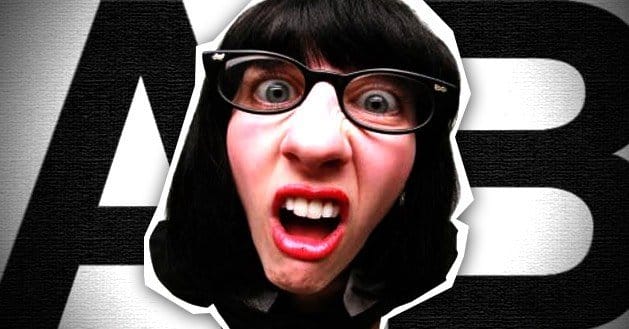 Written by ContentPowered.com
Written by ContentPowered.com
A/B testing, also known as split testing, is a great way to test out two campaigns side by side to eliminate other variables. Run two identical campaigns, save for a single difference in wording, image or landing page. Set each variant to land on a different page and record which performs better. It’s simple in concept, but powerful in usage.
Getting Started: What You Need
Before you can get started with split testing on Facebook, you need a few tools set up. You may already have them, or you may be new to the game and need to get them. Thankfully, they’re almost all free.
• Your Facebook Page. It must be a Page, not a Profile, and it works best if you’re already established as a business.
• A Facebook Ads account. The point of A/B testing is to refine your ad campaign, so you need to have an ad campaign to begin.
• Google Chrome. You’ll need this specifically to enable split testing, because the extension that allows it is only available for Chrome. That means no Firefox and no Internet Explorer. Every browser has its place in SEO, but in this instance, it’s Chrome or nothing.
• Facebook’s Power Editor extension. You can find this extension easily enough, and it only works in Chrome. This is essential for split testing on Facebook; you can’t use this process without it.
Of course, you’ll also need the content of ads and landing posts, but all of that comes down to what you’re testing, and you wouldn’t be investigating split testing if you didn’t have some idea of how to begin.
Setting up Split Testing
The actually process of setting up split testing using the Power Editor is fairly easy.
- In the Facebook Power Editor, create a new campaign and within it a new ad.
- Select the “For a Facebook Page using a Post” option for the type of ad. This sets the ad to target a specific post on your Facebook page.
- Create a new unpublished post. Design your post according to how you’re split testing. You’ll need two of these for A/B testing, or more if you’re testing more variables at once. Make sure to specify users who are connected to your page under connections.
The key to Facebook split testing is the unpublished post. An unpublished post is a post on your Facebook page that is only visible to those who have a direct link. You give the direct link in the Facebook ad. No one other than the people who click the ads can see the posts. They aren’t visible on your Page wall itself or in search indexing. This allows you to monitor the incoming metrics on each of those posts to compare the conversion rates of each ad.
Tips for Split Testing
- Treat it like a scientific experiment. Change, at most, one variable at a time when you test. If you’re changing more than one variable, you don’t know which variable is the one that had the effect you wanted.
- Maintain similar conditions for each ad. Post them at the same time of day, share them with the same number of people, run them for the same length of time; any variable difference between them should be the same.
- Monitor the exact reports, don’t go by feel, when analyzing the results of each ad. Often the situation arises where it looks like one ad performed better than the other, but the actual metrics – page likes or conversions, whatever your goal – suggest otherwise. Trust the metrics, not your gut.
- Create a new ad each time, don’t simply tweak an existing ad. It’s easy to create a new ad through Facebook, using the “Create a similar ad” button, so you have no excuse for such corner-cutting.
- Don’t just split test your ad, split test your landing page. That’s the purpose of using two unpublished posts. Run two ad campaigns with identical ads but different landing pages, so you can tweak the wording and format of the unpublished post.
- Don’t cut off the ad too soon, but also don’t let it run too long. If your click rate drops too low, you’re wasting your ad budget on running the same ad to a saturated market. If you don’t run it long enough, however, you’ll find the comparison between A and B in your split testing is too close to call.
What to Test
There are a number of particular aspects of both your ad and your landing post that you can test. Consider:
- Ad image. Your ad image is what draws the eye over to the ad in the first place. Which image is more compelling?
- Landing post image. If you’re using an image post, you can tweak the image to better suit the expectations of your users.
- Ad title. Use a typical brand mention ad title for your control ad, and experiment a little with your testing ad.
- Ad details. Facebook limits what you can do with an ad, so you can’t go crazy with font colors and styles, but you can customize your ads to a certain degree.
- Landing post details. The same goes here; you can’t really customize the font of the text on your landing post, but you can customize a few small details.
- Ad copy. Is the text next to your ad compelling? Can you come up with something more interesting to draw in users?
- Landing post copy. The text on your landing post is arguably the most important part of split testing. There’s so much room for tweaking that you can spend your entire time split testing just this aspect of your campaign alone. Of course, you need to bear in mind the 80/20 rule; 80 percent of your effects come from 20 percent of your work. Spending more time on your copy will gradually show diminishing returns. You may have something much better to spend your efforts on.
- Ad targeting. Using the Facebook Audience Network, you can control the audience segments targeted by your ads. Is one particular audience more responsive than another?
With every phase of your testing, you need to be monitoring incoming clicks, likes and conversions. Monitor the stats for the control ad and for the experimental ad. Be aware that you will need to change both frequently; use tried and tested ads for controls, but be aware that saturating the market with too much exposure to one ad will minimize its effects, skewing the results in the favor of the experimental ad. There’s a balance you must strike in experimenting with advertising, and it will be a quick turnover.
Split testing is one incredibly powerful tool you can use for Facebook. Plus, you’re always running ads. It’s not as though your control ad isn’t a functional ad itself; they both bring in new users. All your testing is just to determine which is better at the job, but they both work for you while you test. It’s truly a win/win scenario.


